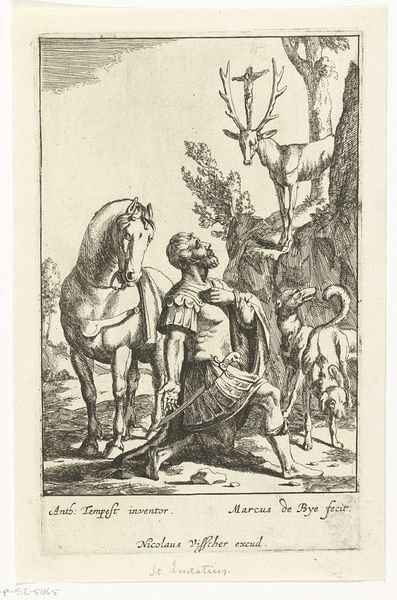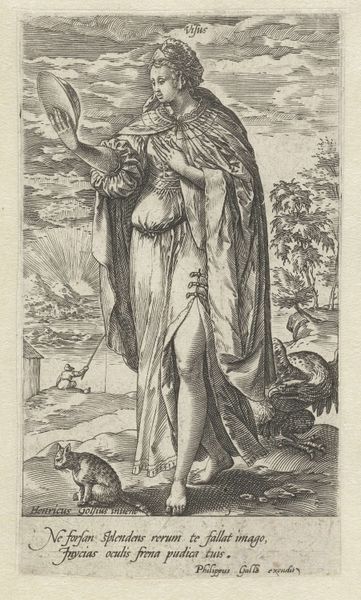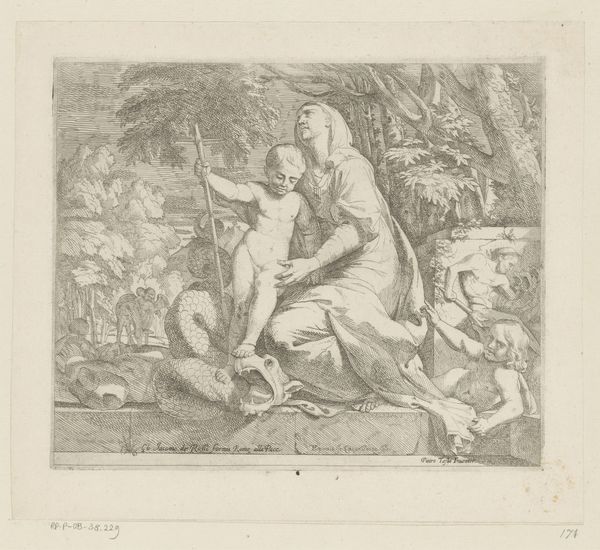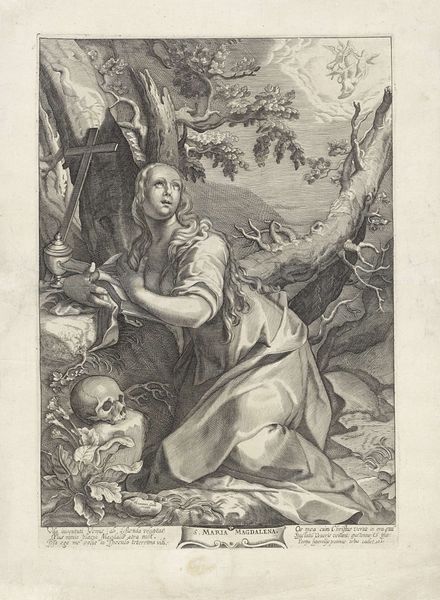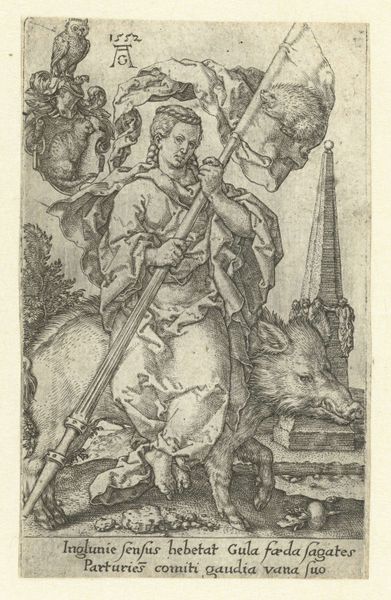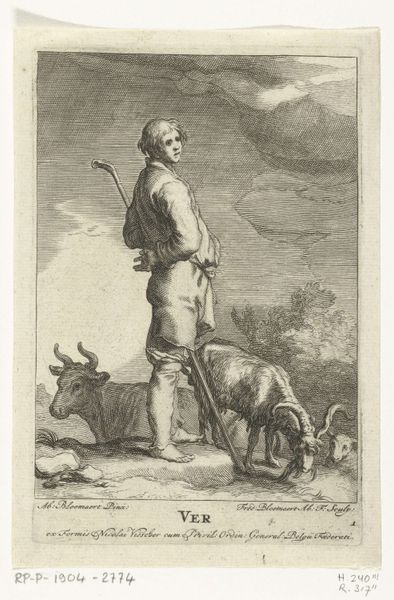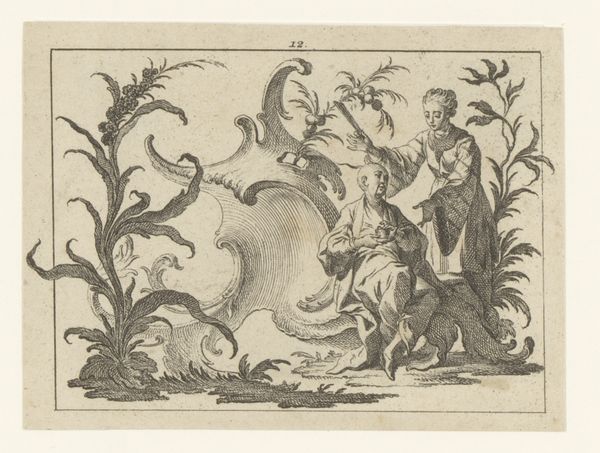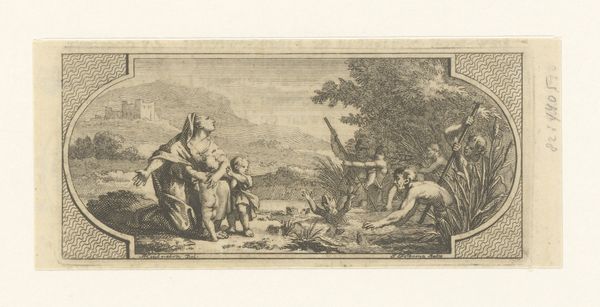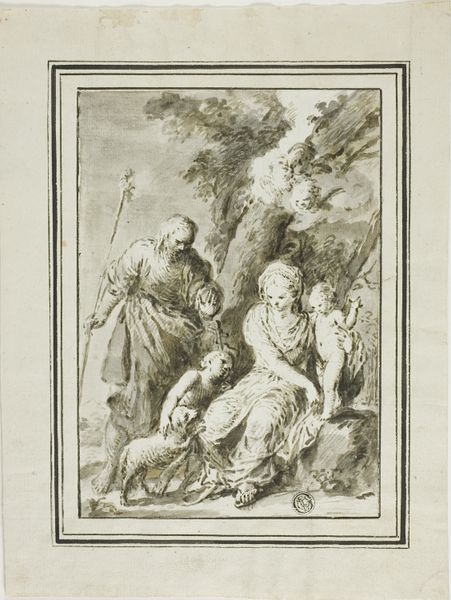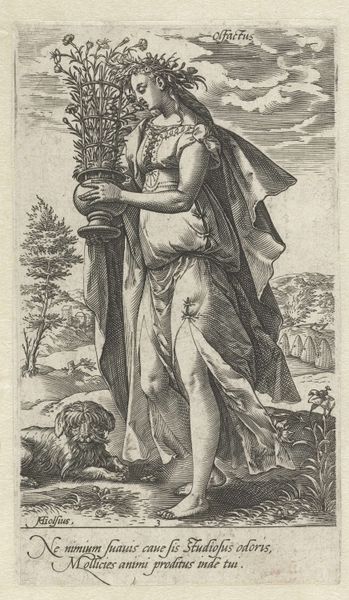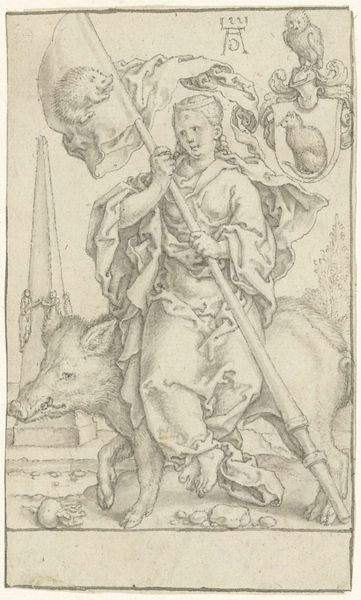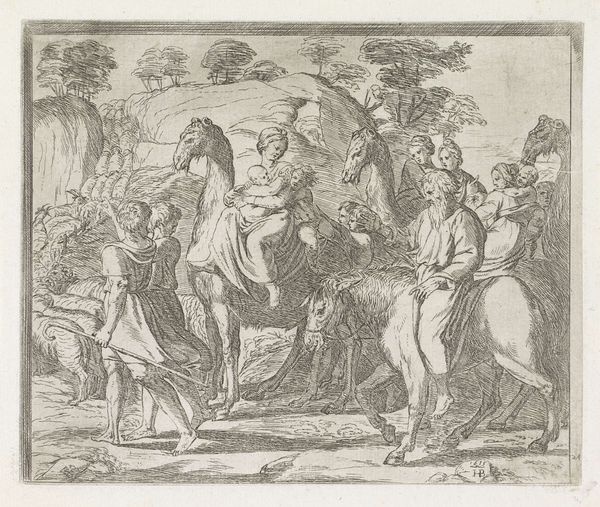
print, engraving
#
baroque
# print
#
landscape
#
figuration
#
history-painting
#
engraving
Dimensions: height mm, width mm
Copyright: Rijks Museum: Open Domain
Editor: Here we have an engraving, dating from the late 17th century, depicting "The Flight into Egypt," its artist unfortunately unknown. There's a stark simplicity to it. What I find immediately striking is how… ordinary they seem. How do you read this piece? Curator: Ordinary is a brilliant observation! I think that's exactly what the artist intended. The Flight into Egypt is a story of disruption and the search for refuge, a moment when the divine touches the human in a most practical way. Look how Mary sits astride the donkey, not ethereal, but almost slumped with exhaustion. And Joseph, burdened by possessions and worry, leading the way. Don't you almost feel the dust on your sandals just looking at it? It feels very Baroque. Editor: I see what you mean. They are traveling; there's no glamour or divine fanfare here. Do you think the landscape plays a role? It feels a little... staged, maybe? Curator: The landscape, yes! Baroque landscapes often play with dramatic contrasts. Notice the deep shadows balanced by areas of light? It's theatrical, heightening the drama. It isn't just a backdrop; it's another character, full of uncertainty. But it’s also protective, giving cover for the Holy Family. Think of how much courage it takes to flee with everything you have into the wilderness. Editor: Right! The landscape echoes their uncertainty. Thinking about the historical context… what kind of commentary might this artist have been trying to convey? Curator: I like where you are going with this. Well, beyond the immediate religious narrative, the 17th century in Europe was no stranger to displacement and upheaval. Perhaps this "ordinariness" you identified connects with viewers on a much deeper, more human level by underscoring themes of compassion and sanctuary. Makes one ponder how "history painting" sometimes has so little to do with history as grand narrative. Editor: So, seeing them as ordinary allows us to empathize with them, linking a biblical story to everyday struggles. Curator: Precisely. What I love most about art is the conversations they invite across time, right? You just started a really meaningful one.
Comments
No comments
Be the first to comment and join the conversation on the ultimate creative platform.

